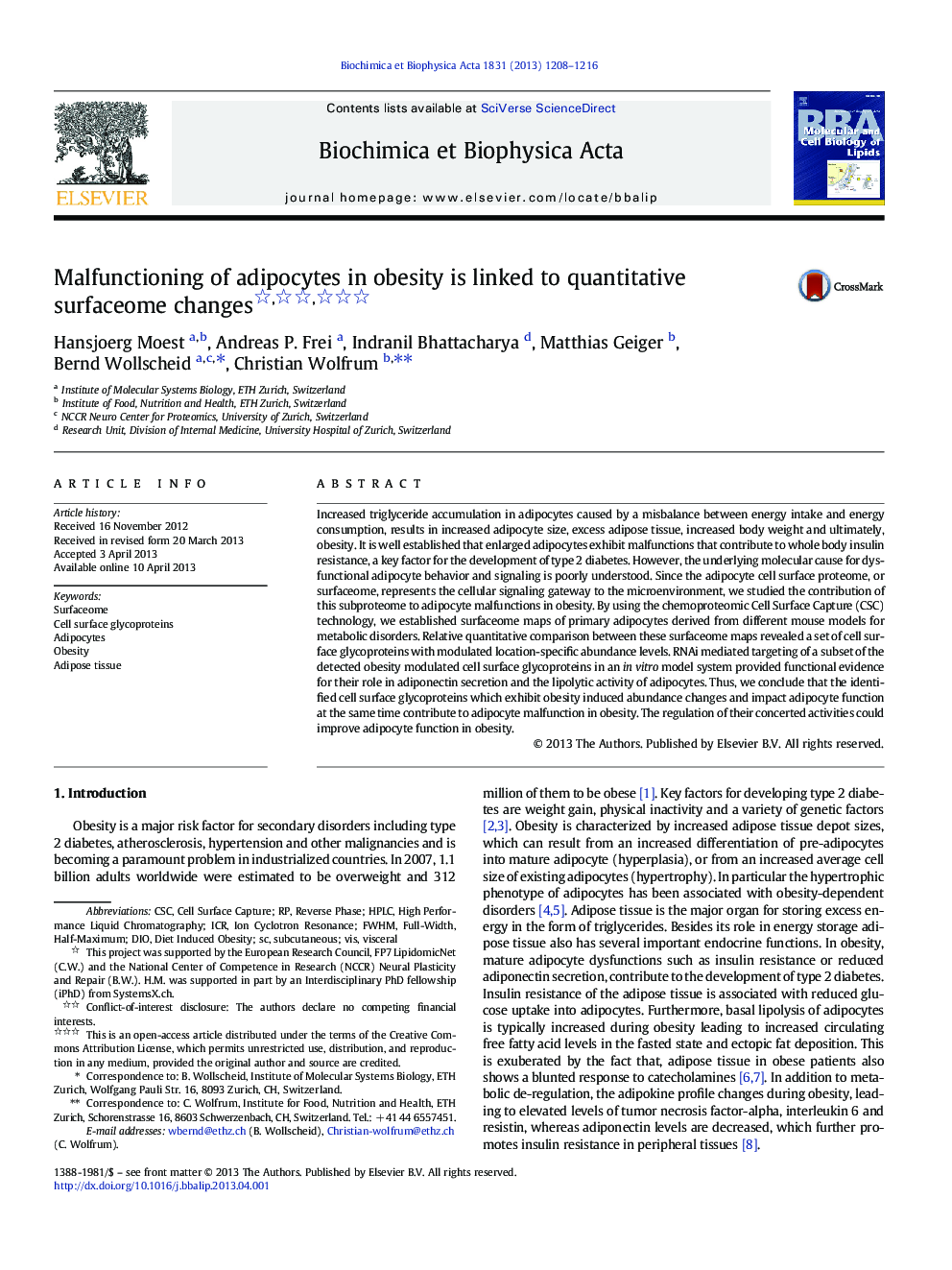| Article ID | Journal | Published Year | Pages | File Type |
|---|---|---|---|---|
| 8302575 | Biochimica et Biophysica Acta (BBA) - Molecular and Cell Biology of Lipids | 2013 | 9 Pages |
Abstract
Increased triglyceride accumulation in adipocytes caused by a misbalance between energy intake and energy consumption, results in increased adipocyte size, excess adipose tissue, increased body weight and ultimately, obesity. It is well established that enlarged adipocytes exhibit malfunctions that contribute to whole body insulin resistance, a key factor for the development of type 2 diabetes. However, the underlying molecular cause for dysfunctional adipocyte behavior and signaling is poorly understood. Since the adipocyte cell surface proteome, or surfaceome, represents the cellular signaling gateway to the microenvironment, we studied the contribution of this subproteome to adipocyte malfunctions in obesity. By using the chemoproteomic Cell Surface Capture (CSC) technology, we established surfaceome maps of primary adipocytes derived from different mouse models for metabolic disorders. Relative quantitative comparison between these surfaceome maps revealed a set of cell surface glycoproteins with modulated location-specific abundance levels. RNAi mediated targeting of a subset of the detected obesity modulated cell surface glycoproteins in an in vitro model system provided functional evidence for their role in adiponectin secretion and the lipolytic activity of adipocytes. Thus, we conclude that the identified cell surface glycoproteins which exhibit obesity induced abundance changes and impact adipocyte function at the same time contribute to adipocyte malfunction in obesity. The regulation of their concerted activities could improve adipocyte function in obesity.
Keywords
Related Topics
Life Sciences
Biochemistry, Genetics and Molecular Biology
Biochemistry
Authors
Hansjoerg Moest, Andreas P. Frei, Indranil Bhattacharya, Matthias Geiger, Bernd Wollscheid, Christian Wolfrum,
